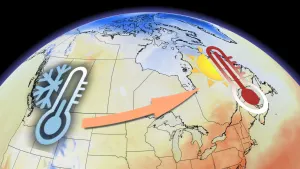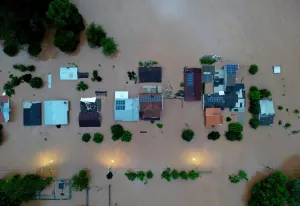
Discovering nature in your backyard
You don't have to travel far to make new discoveries.
At the time of this writing, approximately one-third of the world's population -- or, more than 2 billion people -- are under some form of COVID-19-related quarantine.
The severity of those lockdowns vary. Some places currently allow residents to visit public parks and beaches, while others strongly advise against leaving the house for anything other than essential matters.
We've all seen the big ways the stay-at-home orders have changed our lives: professional sports have been put on hold, Easter celebrations were cancelled, and we're all travelling less.
But there are subtle changes taking place as well. One of them is being implemented by the organizers of the City Nature Challenge (CNC), an annual, international competition in which participants find and document plants and wildlife across the globe.
Cities that make the most observations and identify the most species usually win, but this year, organizers are shifting focus.
Uploaded to The Weather Network by Toonie Irvine, Duncan, B.C.
"We have made some major modifications to the City Nature Challenge this year because of COVID-19," Lila Higgins, CNC co-founder and senior manager of community science at the Natural History Museum of Los Angeles County, tells The Weather Network.
"We know that nature is very healing, exposure to natural landscapes has been proven to decrease stress and increase an overall sense of wellbeing. So, this year we are encouraging the healing connection to nature rather than the competitive aspect of the challenge. Our topmost priority is to keep everyone safe, by following the directives of) their local governments. Instead of going on a long trip to find nature, we are encouraging people to look for nature where they can safely do so--whether that is from within the safety of their own homes, their yards, or walking in their local neighbourhoods."
Uploaded to The Weather Network by Linda Whalen, Sault Ste. Marie, Ontario.
MAKING NEW DISCOVERIES AT HOME
Not all scientific discoveries are made in faraway, remote places: Higgins recalls the Los Angeles couple who discovered an unusual snail in their backyard and, with the help of Natural History Museum curator of malacology Dr. Jann Vendetti, identified it as a species that had never been observed in LA before.
Uploaded to The Weather Network by Olga Derevianko, Mississauga, Ontario.
Ted Cheskey, the naturalist director at Nature Canada, suggests using an app to connect with experts and further research.
iNaturalist is recommended by the CNC and Nature Canada as a way to easily share findings with the scientific community.
"This allows people to provide observations to a central database that stores local data for researchers and scientists," Cheskey says.
"This citizen science offers tremendous value to the national, regional, and local bird inventories and helps monitor bird populations. It also creates a strong connection between new birders and their nearby nature."
Uploaded to The Weather Network by Mark Windsor, Grand Forks, BC.
And if your main interest is birds, Cheskey also recommends the eBird and Merlin Bird ID apps.
To encourage wildlife to visit your property, Aly Hyder Ali, Nature Canada's urban nature organizer, recommends planting a variety of native plants that will act as food and habitat, as well as a source of water.
VIDEO: MORE TIPS ON FEEDING WILDLIFE
GETTING STARTED
One of the benefits of observing nature from home is it provides a safe environment that's friendly for all age groups.
Higgins says beginners can start by using a phone or a camera to take photos of the birds that fly by, or sitting by a flowering plant and documenting the various insects that visit it.
If you're interested in investing in a toolkit, Nature Canada recommends a good pair of binoculars, a notebook, and your app of choice.
Uploaded to The Weather Network by Michelle Gayder, Niagara-on-the-Lake, Ontario.
GETTING INVOLVED
Getting involved can be as easy as opening your door, stepping outside, and recording what you see.
If you'd like to take part in the CNC, visit citynaturechallenge.org to see if your city is taking part.
"Then you just need to find wild nature -- we encourage wild nature rather than captive or cultivated plants and animals -- take a picture of it using your smartphone or digital camera, and upload it to your city's platform, with most cities using iNaturalist," Higgins says.
"For more detailed instructions check out our website."
Uploaded to The Weather Network by Margaret Flack, Vanscoy, Saskatchewan
CNC observations are being recorded from April 24 – 27, and uploaded and identified April 28 – May 3.
The collective results will be announced on May 4.
You can also upload your photos and videos to The Weather Network website and connect with other photographers and wildlife enthusiasts in your community.
Happy hunting!










